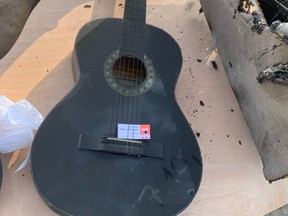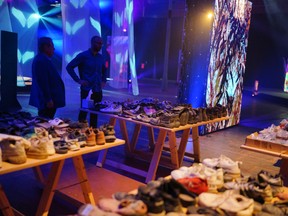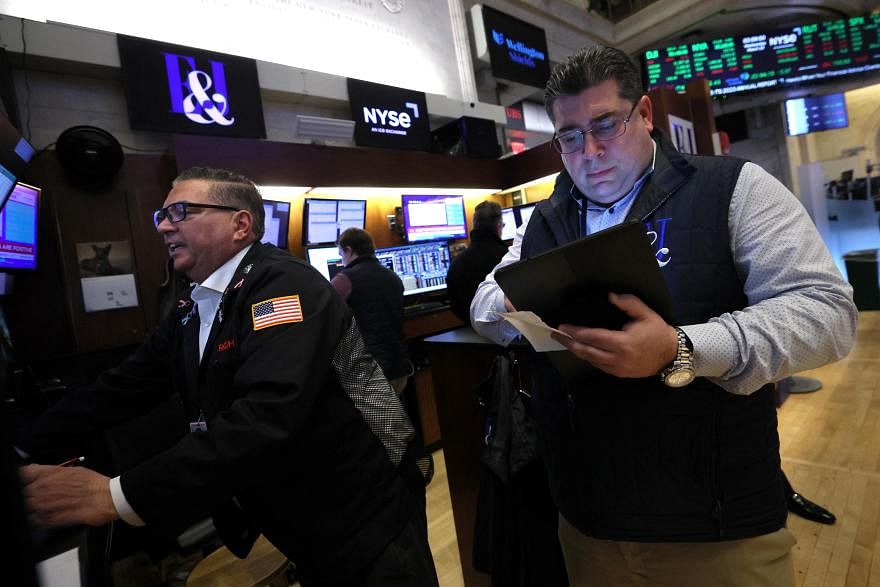Israeli institutions are collecting singed toys, text messages and other evidence of the attacks, to preserve memories and battle distortion
Article content
JERUSALEM, Israel — A year after the largest massacre of Jews since the Holocaust, two iconic Israeli institutions, the National Library of Israel and Yad Ben-Zvi, are leading a mission to preserve the memories and lessons of October 7.
“The material tells the story of the sheer magnitude of the destruction, murder and devastation,” says Dr. Raquel Ukeles, who spearheaded the initiative for the National Library (NLI), where she is head of collections.
Advertisement 2
Article content
Founded in 1892, the NLI serves as the institution of communal memory for the land and State of Israel, and the Jewish people worldwide. Now, with funding from Israel’s Ministry of Heritage and private philanthropies, with help from volunteer organizations and individuals, the NLI is creating the world’s largest and most comprehensive textual October 7 archive.
The global, five-year project — it’s titled Bearing Witness: Documenting October 7th & Its Aftermath — will record the civic, political, religious and cultural impacts and discourse on and after October 7, both in Israel and in North American Jewish communities, through texts, videos, photographs, music, maps, websites, and social media posts.
Not far from the NLI, in Jerusalem’s Rechavia neighbourhood, another renowned Israeli institute is collecting physical artifacts, known as tangible heritage, from October 7. Yad Ben-Zvi is a research institute and academic publishing house founded in 1947 by Israel’s second president, Yizhak Ben–Zvi.
“Never before have items been collected for posterity from their original places, directly from homes and other scenes of horror,” says Dr. Nirit Shalev-Khalifa, curator and director of Yad Ben-Zvi’s Department of Visual History and Documentation.
Advertisement 3
Article content
“Their new purpose is to serve as memorials.”
Five weeks after October 7, Israel’s Ministry of Heritage enlisted Yad Ben-Zvi and other organizations to begin the process of preserving physical objects damaged on that Black Saturday. On Nov. 19, Shalev-Khalifa moved into a family’s empty home on Moshav Tkuma in the Gaza Envelope together with registrars and conservators from Israeli museums. The team sleeps there during the week, and, for the past 10 months, have painstakingly sifted through the region’s charred devastation for items with historic value.
“We entered the unknown,” says Shalev-Khalifa. “When we began, the entire region was abandoned. With residents’ permission, we started by digging through the ashes and collecting items for storage so that the community and families can have them for any future memorial they may wish to create.”
Among the mangled and barely distinguishable ruins were a bullet-riddled window bearing Disney characters that once hung outside a kindergarten; a melted water cooler; a shattered mirror; a scorched mattress; a broken baby bottle; and a singed teddy bear.
Article content
Advertisement 4
Article content

“Suddenly, every object in the collection has a new identity,” says Shalev Khalifa. “On October 7, victims’ beautiful lives and homes were destroyed. Almost nothing remains; here and there we’ve found photo albums covered in soot in homes that were completely burned, which has been a great joy. But the majority of computers, photos and precious keepsakes did not survive.”
The NLI began collecting material on the Israel-Hamas war as early as October 9, and has since amassed millions of items — translated as over 30 terabytes of material — thanks to over 300 volunteer organizations and individuals who have, and continue, to contribute material via independent initiatives.
“Right after October 7, there were many altruistic citizens who understood the historical import of what had just happened, and they got to work collecting and documenting,” says Ukeles.
“The alternative to accurately and adequately documenting our history, is that it can become very distorted. In the case of October 7, we saw how quickly the events were challenged or even denied. Therefore, the response needs to be a massive, robust and stable corpus of material.”
Advertisement 5
Article content
Ukeles credits citizens’ post-Holocaust “Never Forget” consciousness: “I think that what happened right after October 7 was a direct correlation to an entire population being keenly aware of the need to collect these stories immediately. This is an entire generation that learned that lesson from the Holocaust.”
In North America, the NLI’s “Bearing Witness” is also documenting the experiences and actions of students, faculty members, and organizations on college campuses, as well as the political and social responses to October 7, including antisemitism and anti-Zionism.
“The library always aims to collect as broadly and as inclusively as possible,” says Ukeles.
“We don’t fall into any one interpretation or agenda. We capture many different perspectives, not just the pro-Israel perspective. Our role is to preserve this material and make it available for research, learning, and understanding.”
Of the NLI’s 11 million website visits per year, 1.2 million visitors stem from Arab countries and NLI’s Arabic site draws 1.5 million visitors annually. Citing the NLI’s vast Islam and Middle East collection and collection of Palestinian culture and society, Ukeles notes that since October 7, the library has also been collecting Arabic websites, Palestinian discourse, and the whole spectrum of responses of Israel’s Arab citizens.
Advertisement 6
Article content
For Yad Ben-Zvi, there is a race for time to preserve all of the severely damaged items before they disintegrate or are inadvertently discarded in the clean-up process and demolition of crumbled buildings.
“The collection of items associated with the Holocaust only began about 40 years ago, and the archiving of 9/11 objects only began in 2002. In a couple of years, many of the items that remain from October 7 will turn to dust,” says Dr. Khalifa. “We’re literally performing forensic work and documenting crime scenes. It’s imperative to preserve them as historic testimony. One can argue about oral history, or photoshop a picture; but once trauma is etched into an object, it exists with certainty.”
Depending on their material, some items are wrapped in silk and placed in cardboard trays, others in plastic boxes. They are then stored in safe rooms, protected from further potential damage.
Dr. Shalev-Khalifa recalls a particularly moving exchange with a resident of one of the kibbutzim, whose entire family was killed on October 7.
“The woman asked our team to work in her house,” she says. “Everything was burned on October 7, except for things that had been in her safe room at the time. Among the items we had wrapped up for her was a doll belonging to her grandchildren. She remarked, ‘My pain will never leave me until I die. But tonight I will finally sleep, because you wrapped my worries in silk and placed them on a shelf, where they are now being held.’”
Advertisement 7
Article content
Yad Ben-Zvi has amassed about 15,000 objects from 18 kibbutzim, as well as the now-demolished Sderot police station, where 35 officers and civilians were murdered by Hamas terrorists. Those items join the roughly 20,000 objects collected by the producers of the Nova Music Festival, which are now on display in Los Angeles as part of the travelling Nova Exhibition.

Initially, Shalev-Khalifa envisioned that the archiving project would span three weeks. Given the extent of the trauma, she now believes the work will take another six months. In the coming years, she anticipates they will receive another 10,000 items from the public.
“That is what our colleagues from the National September 11 Memorial Museum in New York experienced,” she says. “Twenty-three years after 9/11, they continue to receive items weekly from citizens.”
For now, Yad Ben-Zvi’s digital October 7 archive is unavailable to the public, out of respect for victims’ and families’ privacy. The physical objects captured in the photographs remain on the kibbutzim. As the items require a unique conservation process, Yad Ben-Zvi is creating a special warehouse to house them and is seeking funding from all sources for their preservation. The objects collected to date at Kibbutz Be’eri already fill three buildings, and the residents are working on opening segments to the public.
Advertisement 8
Article content
As for plans for a future museum, Shalev-Khalifa says it’s too premature to think that far ahead.
“Right now, these items do yet constitute history,” she says. “The catastrophe is still happening; there are still hostages. Our role is to protect the objects by cataloging them and providing a foundation for future use, once this ultimately ends. We are providing a professional platform; each community and family will decide what to do with it.”
Coinciding with October 7’s first anniversary, the NLI will be uploading about 100 items from the archive on its website, as an example of the materials amassed to date. Ukeles explains that the bulk of the “Bearing Witness” project centres on cataloging the material, which is a highly time consuming process requiring the use of advanced technology, including AI, to extract information from photographs and videos, like people’s names, locations, and the time of day the media was captured.
“All of this material, as you can imagine, is very sensitive,” she says. “There are a number of ethical considerations. For example, by law, if a minor child gives testimony with their parents’ permission, it can be used. Under Israeli law, a person who’s no longer living doesn’t have a right to privacy. But we wonder if it’s morally correct to use this material. We’re taking the time to consider these issues and are consulting with an array of experts in order to build a best practices document and determine the moral course of action for both the library and our partners.”
Advertisement 9
Article content
As Israel continues to grieve the interminable losses that began on October 7, Ukeles sees the preservation of memory as a promising opportunity on the collective path to healing.
“In the Jewish tradition, the commandment to remember runs deep within our DNA,” she says. “Our collective history is what defines us and is a core part of who we are. Jews and other people have been dealing with catastrophes, whether natural or human-made, for all of history. What we do with that history will define us going forward. It will be challenging to ensure that these memories don’t cripple us, or weigh us down, but instead to honour these memories while building and creating, once again, a thriving society.”
The public is invited to contribute materials to the “Bearing Witness” project via https://www.nli.org.il/en/at-your-service/who-we-are/projects/october-7 .
Our website is the place for the latest breaking news, exclusive scoops, longreads and provocative commentary. Please bookmark nationalpost.com and sign up for our newsletters here.
Article content






